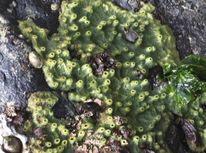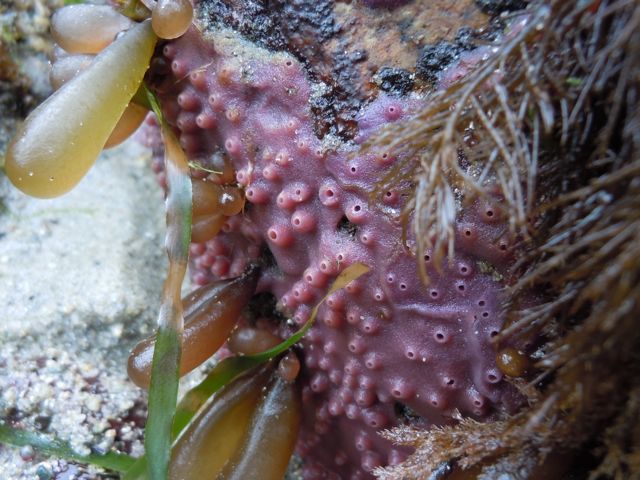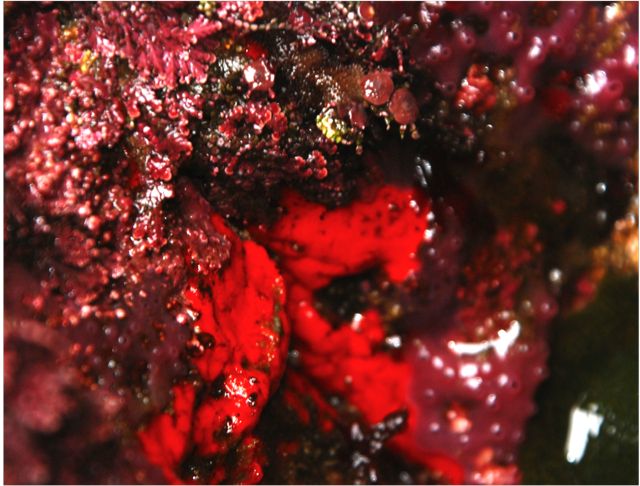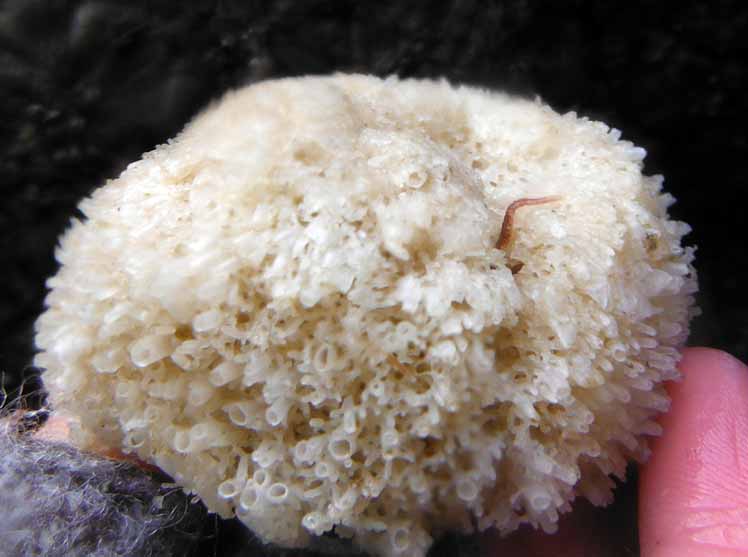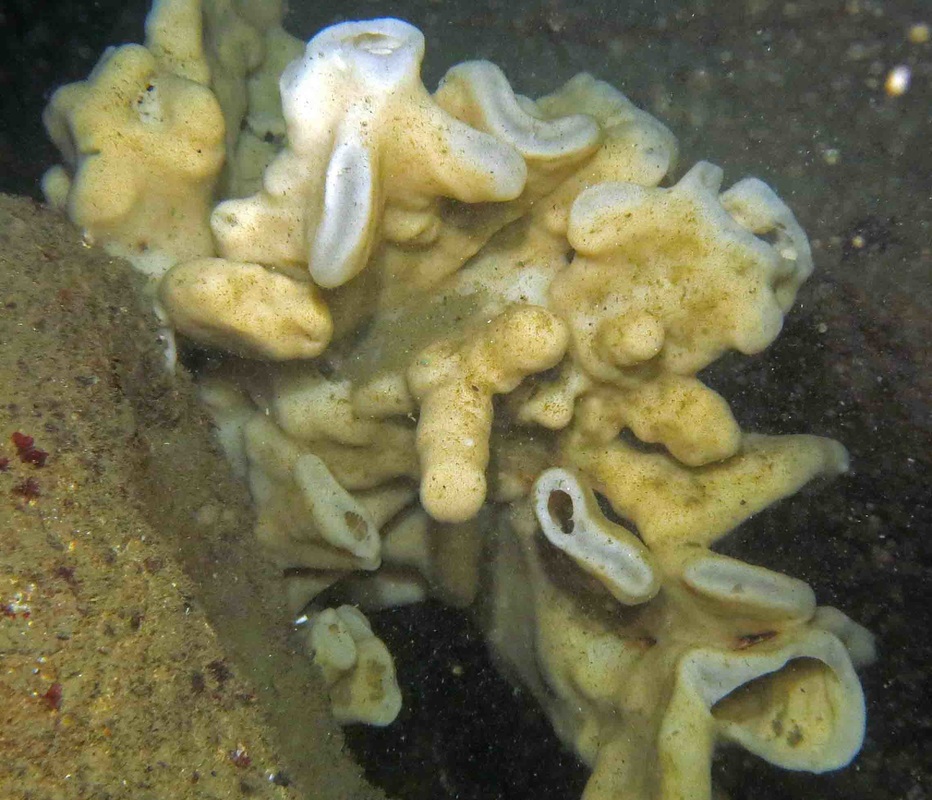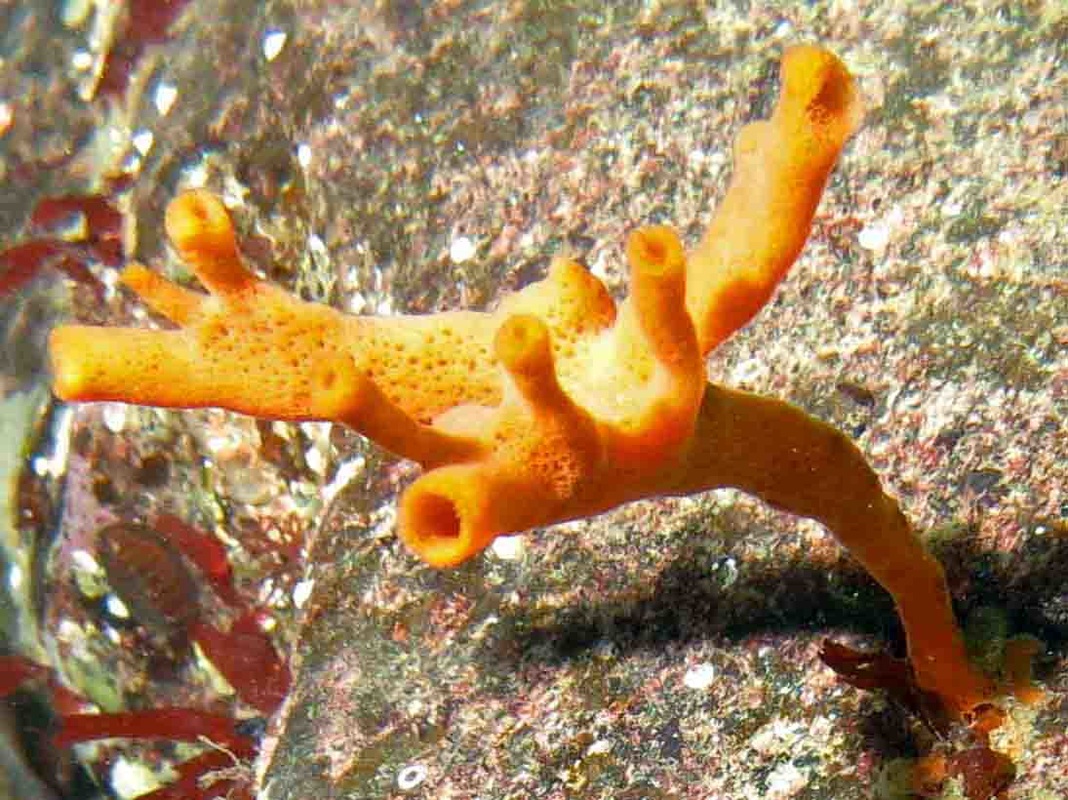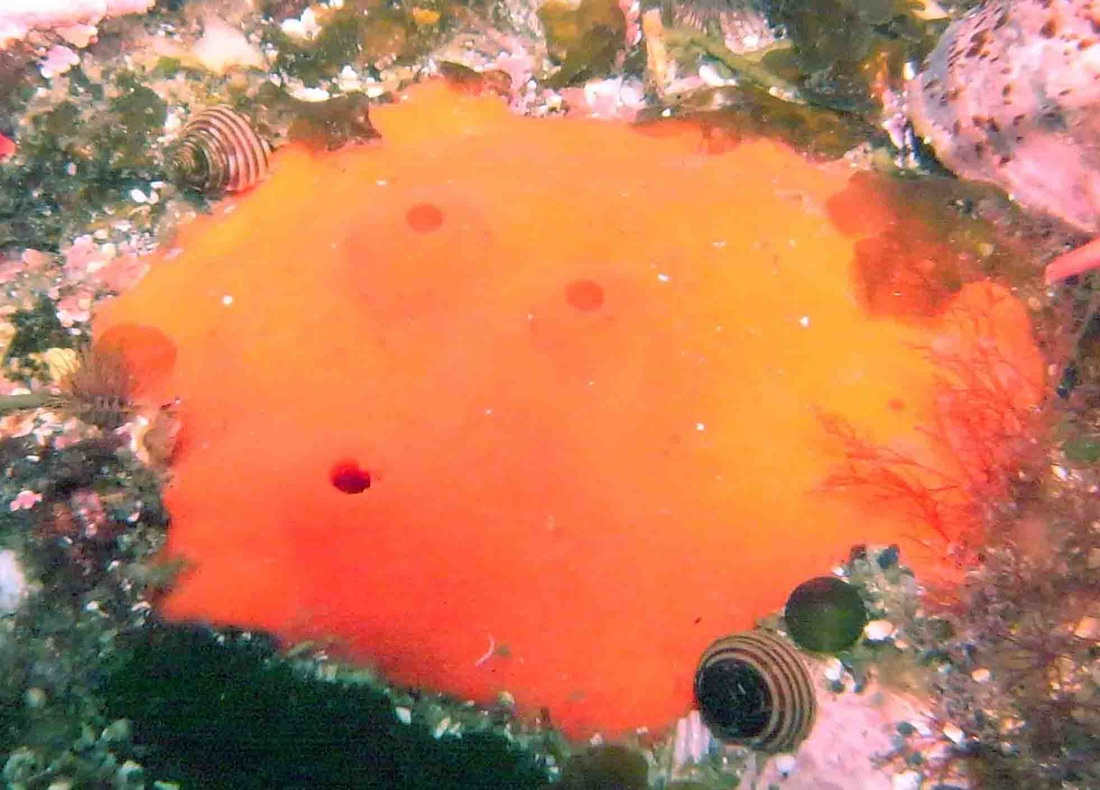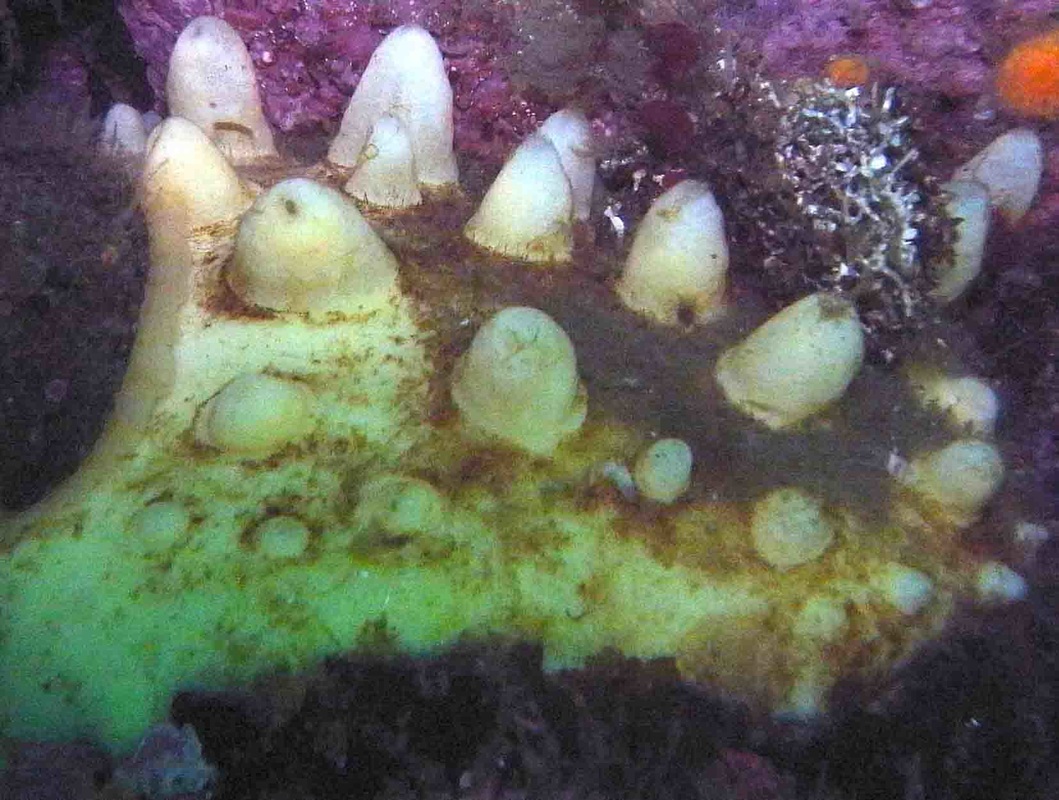Sponges
Also known as Poriferans, sponges are given structure by a skeleton-like framework composed of various organic and inorganic materials, including spicules made out of silica or calcium carbonate. This framework, which is lined with flagellated cells, creates a network of pores, channels, and chambers within the sponge. These mouth-less animals filter water into this network via external pores in order to feed on microscopic plankton. Sponges can form a variety of shapes, from flat, encrusting mats to tall and elaborately-branched structures. Sponge identification can be tricky, as there is much uncertainty in sponge taxonomy, sponge growth patterns can be influenced by environmental factors, and many sponges cannot be easily identified by any obvious morphological characteristics. Click here to learn more about sponges.
